1859 to 1899 – Foundation / The Early Years
The London Irish Volunteers were founded at the Freemasons’ Tavern, Great Queen Street on 5th December 1859 during concerns over the threats posed by Napoleon III, and which prompted the rise in the Victorian Volunteer Movement. The Marquess of Donegall presided at the original general meeting.
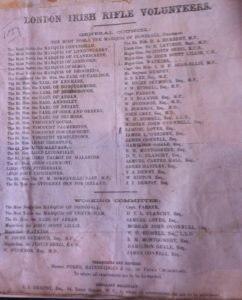
The formal formation of the Regiment took place in February 1860, and at that time was named the 28th Middlesex (London Irish) Rifle Volunteer Corps. The original maximum establishment was a Captain Commandant, 1 Captain, 2 Lieutenants, 2 Ensigns and 200 men of all ranks. Its first uniform was grey with green facings, and a triple sprig of silver shamrock in metal, together with the old fashioned shako bearing a bunch of cock’s feathers. The Regiment’s first parade numbered 60, with the Marquess of Donegall as Commandant.
Enrolled members had to pay an entrance fee of 1/2 a guinea, and also an annual subscription of 1 guinea. Honorary members paid 5 guineas, and 1 guinea annual subscription and were allowed to wear the uniform of the corps with the exception of the cross belt.
On becoming a battalion in May 1860, the designation “London Irish” was recognised for the first time. Eight companies were then composed before increasing that number to nine at the end of the year – numbers being then replaced by letters. The first Honorary Colonel of the Regiment, Field Marshal Viscount Gough, was appointed in May 1861. In 1865, 62 recruits from the Government Clothing Factory completed ‘G’ Company and at that time some questions were raised in the press whether the London Irish had abandoned their strict rule of only recruiting Irishmen. In 1866, the Battalion consisted of 10 companies, increasing to 12 in the following year – each company comprising approximately 100 men. In 1870, there was an alteration in uniform, which now included emerald green facings and a silver shamrock on the shoulder strap and, in May 1871, Snider rifles were issued to the London Irish.
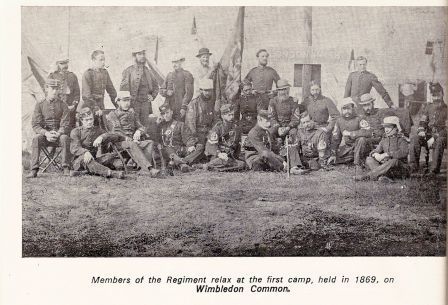
Later in 1871, Prince Arthur (Duke of Connaught) became Colonel of the Regiment, and he would remain so for the next 70 years. In 1872, after several changes in address, the HQ of the regiment moved again back to the Strand where it then remained for more than 20 years. At that time, the strength of the battalion had fallen to 786 men, after a number of resignations (from a peak of 1170 in the 1860s). The Marquess of Donegall continued as Commandant for several more years until ill health struck and he was eventually succeeded in 1883 by Colonel James Ward.
In 1877, the officers’ uniform was ordered to be the same as the 60th Rifles and other standards were changed so that men could not be less than 5 foot 6 inches or more than 5 foot 10 inches in height. On the occasion of the Duke of Connaught’s marriage in March 1879, the officers of the London Irish Rifles presented him with a silver table centre-piece with the names of the officers then serving being engraved thereon.
On 3rd September 1880, under the Cardwell reforms and along with other Middlesex regiments, the Battalion was re-numbered as 16th Middlesex (London Irish) Rifle Volunteer Corps, and in 1881 became a Volunteer Battalion of the Rifle Brigade. During the Queen’s Jubilee year in 1887, the regiment kept the ground at Buckingham Palace on the occasion of the Royal Procession to Westminster in June, and took part in the review by the Queen of 63,000 men at Aldershot.
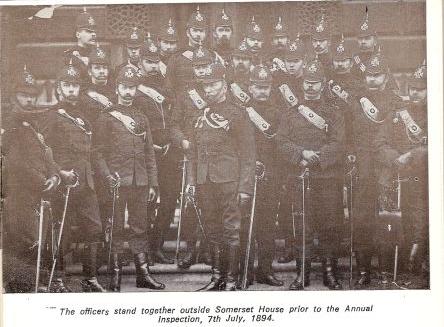
In 1889, Lt-Col Howland Roberts became Honorary Colonel before succeeding Colonel Ward as Commandant in 1896. During this period, the Regiment took part in several Royal Reviews including those for the Jubilee at Buckingham Palace in 1887, and the Royal Review at Windsor for the visit of the German Kaiser in 1891. General Roberts also commanded the military contingent at the funeral of Lord Tennyson in 1892 – the dark uniform of the Regiment being eminently suitable for the occasion.
When in 1892, the Royal Warrant authorising the Long Service Decoration for 21 years of service, three officers were entitled to receive this decoration, along with the Duke of Connaught – these being Colonel James Ward, Colonel Howland Roberts, and Lt-Col Lloyd. There were also 22 NCOS and privates, who had served continuously for 21 years at that time.
In April 1897, Colonel Ward died, being replaced as Commandant by Colonel Roberts, who saw the regiment through the Boer War.
1900 to 1913 – Boer War/Pre First World War
At the time of an appeal for volunteers at the outbreak of the Second Boer War, which started in 1899, over 400 (out of 1100) men volunteered for foreign service, and a further 500 were ready for garrison duty. The Battalion ultimately sent 8 officers, and 200 NCOs and private soldiers for active service with either the City Imperial Volunteers (CIV), the Royal Irish Rifles (RIR), the Imperial Yeomanry or with the Middlesex Regiment. During the war, one officer, Captain FG Concannon, was awarded the Distinguished Service Order (DSO) and twice mentioned in despatches. Captain CG Henty was also mentioned in despatches and another member gained seven bars to his South Africa Medal. In recognition of their service, the London Irish was granted their first Battle Honour of “South Africa, 1900-1902”.
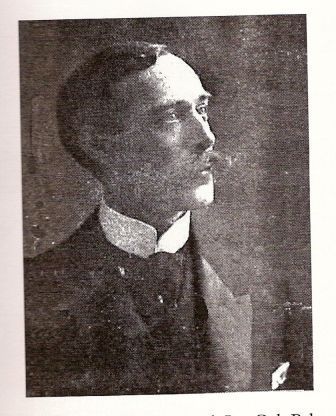
During February 1901, men of the London Irish lined the route at Queen Victoria’s funeral, and were present at the Royal Procession of King Edward VII and Queen Alexandra in October 1902. But in 1903, due to a War Office tightening of regulations for Volunteer Regiments, the numbers in the London Irish fell to 910.
In November 1906, Col Sir Howland Roberts relinquished command of the London Irish, which he had held since 1896 and was succeeded by Lt-Col HA Packenham, who had previously served with the Grenadier Guards and the Royal Irish Rifles. He was the first CO, who had not previously been a company commander in the regiment since the Marquess of Donegall.
In 1908 and as the formation of a Territorial Force (later the Territorial Army) was confirmed, requirements for service became stricter, and numbers in the London Irish fell further to 330, before rising again to 620 by 1910, and at that time was divided between 8 companies. The London Irish was transferred to the Territorial Force as 18th Battalion, County of London Regiment (London Irish Rifles), and in 1911, Battalion HQ moved to the Duke of York’s in Kings Road, Chelsea, their home for the next 90 years. At the same time, for the first time privates soldiers became riflemen.
After the retirement of Lt-Col Packenham in 1913, Major EG Concannon, who had won the DSO in South Africa, became commanding officer of the Regiment. During the same year, the Old Comrades’ Association, the forerunner of the current Regimental Association, was formed and an inaugural dinner held on 22nd November.
1914 to 1919 – The First World War
At the outbreak of the First World War, the LIR raised three Battalions, one of which was held in reserve throughout the war:
– the 1st Battalion (1 LIR) was sent to France on 9th March 1915, with a strength of 29 officers and 1048 other ranks. In May 1915, due to illness, Lt-Col Concannon handed over command of the Battalion to Major Healy. Soon after, the battalion was sent into its first action at Festubert. At this time, Major Healy also became ill and he was compelled to hand over command to Major Beresford. During this early summer period, three riflemen received DCMs for defending their trenches against strong enemy attacks.
On 25th September 1915, the London Irish gained their most famous battle honour at the Battle of Loos, where they led their Division into action, and where Rifleman Frank Edwards and his comrades dribbled a football across No Man’s Land before kicking it into the Germans’ trench with a joyous shout of “goal”. The battalion were able to lead their Division to overcome two lines of German trenches into the village of Loos, before withholding a massive enemy counterattack. During the battle, 5 officers and 66 other ranks were killed, and 4 officers and 144 other ranks wounded. 27 other ranks were also reported as being missing. During the latter part of 1915 and early part of 1916, the 1st Battalion was involved in desultory trench warfare with 15 men being killed in the first four months of 1916, and a further 33 in May in close combat against several German assaults. August saw the battalion involved in intensive training at Crecy, the sight of a previous famous battle in 1346.
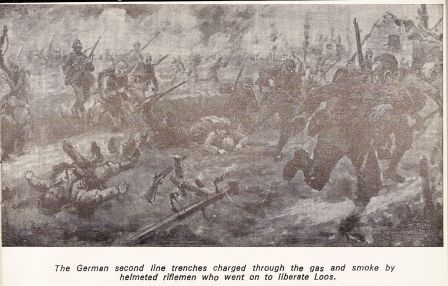
In September 1916, 1 LIR saw further action at High Wood during the Somme battles. 5 officers and 68 other ranks were killed with a further 150 wounded – partly due to the massive failure in the early use of tanks. The next month saw them move to the Ypres region before entering the line there in November 1916, where 12 men were killed. In February 1917, Lt-Col Mahon, who had been at that time commanding the battalion, succumbed to illness and was replaced by Major (soon to be Lt-Col) DB Parry.
During the remainder of the early part of 1917, 1 LIR remained in the line, taking part in several actions in the Ypres sector. In August 1917, Lt-Col Parry was admitted to hospital and Major Murphy took over command of the battalion. They then took part in defensive operations at Bourlon Wood, near to Cambrai in November 1917, suffering gas attacks, which caused many, many casualties.
Due to heavy casualties, all infantry brigades were then reduced from four to three battalions, and the London Irish received a complement of 176 new men from the 6th Bttn (City of London Rifles). After the resulting reorganisation, 1 LIR took part in a successful defensive action against the massive German offensive push of March and April 1918, making a desperate defensive stand near to Neuville. During the summer of 1918, they were involved in several operations before again taking part in offensive action in August at Albert, near to the Somme. At this time, the offensive was led by Colonel Neely. 1 LIR was finally able to leave trench warfare behind for good in early September, and in October, they were involved in the final Allied offensive, entering Lille as part of a steady advance, crossing the L’Escault canal, and eventually firing their last shot on 7th November 1918.
Demobilisation continued from December 1918 to May 1919 when the final 100 men embarked for England, and they were officially welcomed home by the Mayor of Chelsea on 12th June 1919 at the Duke of York’s HQ.
– the 2nd Battalion (2 LIR) embarked for France in June 1916, when it was commanded by Lt-Col WH Murphy with 34 officers and 938 other ranks under command. Initially they were stationed in a sector near to Vimy Ridge, and remained there until October. At one point in August, the 2nd Battalion with in the front line close to the 1st Battalion,
After Lt-Col AE Norton took over command of the 2nd Battalion, they sailed for Salonika in Greece in late November 1916, landing there on 1st December. They remained in Greece for six difficult months, before sailing for Egypt during June 1917. After landing at Alexandria, they travelled by train to El Sahuth where they spent three months training in desert conditions. Their first action against the Turks on 31st October 1917 was during the attack on Beersheeba, where they were in the reserve brigade. Their first battle honour was “El Mughar” awarded for the Battle of Sheria in November. Later in the same month, they took part in the Battle of Nebi Samwill, near to Jerusalem, which eventually fell to General Allenby’s forces on 9th December 1917. In late December, the battalion was ordered to occupy Kherbet Adasseh, but met very strong opposition there from the Turks, who had brought reinforcements from Anatolia and battalion strength was subsequently reduced to 130 men (from an original total of 972 in 1915). 2 LIR then joined the successful British advance in late December towards Jericho.
During the early part of 1918, 2 LIR took part in operations near to the River Jordan, with their final actions of the war taking place in early May 1918, further to the east of the river. The battalion was then disbanded and men were sent to strengthen battalions in the 10th (Irish) Division, which included 1st Leinster Regiment, 1st Royal Irish Regiment and 2nd Royal Irish Fusiliers.
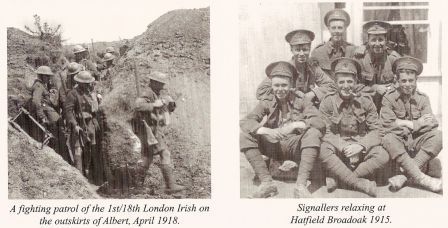
During the First World War the London Irish Rifles:
– suffered a total of 1016 men killed in action with 2644 wounded and 303 captured.
– were awarded 7 DSOs, 33 MCs, 20 DCMs and 101 MMs to men of the Regiment, and
– gained 25 battle honours, that were added to that gained by the Regiment during the Boer War.
1920 to 1939 – The Inter-war Years
After the cessation of hostilities, the LIR was reduced to cadre strength, before being disbanded in May 1919 at Felixstowe. At that time, it was commanded by Lt-Col GH Neely, DSO MC.
On 16th February 1920, the 18th (County of London) Battalion of the London Regiment (London Irish Rifles) was reconstituted as a component of the 47th (2nd London) Division of the new Territorial Army and, in 1923, the designation of the Regiment was shortened to 18th London Regiment (London Irish Rifles).
In line with the prevailing mood throughout the country, several lean years for the Regiment ensued although an excellent spirit continued to be engendered by post war Commanding Officers, Colonels Mulholland, Gribben and MacNamara. During these years, ties between the London Irish Rifles and the Royal Ulster Rifles (RUR), which before 1921 was known as the Royal Irish Rifles, were greatly strengthened, and the London Irish became part of the Corps of the RUR in 1929.
In 1937, when the London Regiment was disbanded, the LIR became known as London Irish Rifles, The Royal Ulster Rifles. After the 47th Division was also disbanded, the London Irish transferred to the 56th (London) Division. Permanent staff were all seconded or attached from the RUR, but up to 1937, the Regimental Sergeant Major was normally found by the Irish Guards – the first Rifleman to fill that office was Hugh Hynds, who later became a doyen of the Regimental Association until 1964. The London Irish was one of the first Territorial units to start mechanisation by drawing up two “Commer” trucks.
The Regiment’s piper-green head-dress, the Caubeen, which was worn by all Irish regiments, and was characterised by being sloped to the left instead of the right – only the LIR and Liverpool Irish having theirs sloping on the left – was adopted for wear by all ranks in 1937 in place of the service dress cap. In April 1939, the establishment of the Territorial Army was doubled and the 2nd Battalion, London Irish Rifles was reformed as a component unit of the 47th (London) Division.
A link to the Honorary Colonel of the Regiment inspecting the London Irish Rifles in 1931 can be found here.
1939 to 1946 – The Second World War
In April 1939, in line with the rest of the Territorial Army, the London Irish doubled to two Battalions; a third battalion 70th (Young Soldiers) Battalion was formed in the autumn of 1940 before being disbanded in April 1943. As the LIR was placed on a common footing, at least for reinforcement purposes, with the RUR, a draft of LIR men joined the 1st Royal Ulster Rifles in Rawalpindi in December 1939.
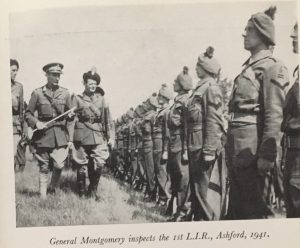
The 1st Battalion (1 LIR) was originally commanded by Lt-Col Macnamara MP, although due to promotion and re-posting, he was not able to lead the battalion into action. At the outset of war, LIR took up defence duties in Kent, being involved in disembarkation duty for the Dunkirk evacuation at Margate and Ramsgate, and in manning anti aircraft small arms in ships in the Channel. Over the next two years, the battalion remained within the Home Forces: one notable action was the capture of a Junkers 88 at Graveney Marsh in September 1940.
On 27th August 1942, 1 LIR, now commanded by Lt-Col Good, set sail for the Middle East, joining 168th Brigade as part of the Persia And Iraq (PAI) Force in the prospective defence of the Iraqi oilfields. After a very uncomfortable six months in Iraq, 1 LIR moved in April 1943 to Egypt for intensive training and then detached with the rest of 168 Brigade to join the 50th Division’s offensive during July 1943, south of Catania in Sicily with their first major action taking place near to Fosso Bottaceto.
As part of the 5th Army, 1 LIR then took part in offensive action at Monte Camino in December 1943, where they suffered heavy casualties. In January 1944, they took part in the Garigliano River crossings and unsuccessful attack on Castelforte, before they were moved at short notice in early February 1944 to defensive positions within the Anzio bridgehead. Over the next six weeks, the Battalion suffered grievous losses as part of the ultimately successful Allied defensive actions. The names of the “Factory” and the “Wadis” became evil reminders of those desperate few weeks. A total of 600 men from 1 LIR were listed as being killed, wounded or missing during their time at Anzio.
Following much needed rest and gaining significant levels of reinforcements and undertaking extensive training in Egypt, 1 LIR returned to Italy in July 1944, now forming part of the 8th Army, to take part in September in the battles for the Gothic Line north of Florence. During the winter of 1944/45, the battalion took up defensive duties near to the River Senio, before taking part in April 1945, with 56th (London) Division, in the initial crossings over the River Reno that led to the final capitulation of the German Army in Italy. Sadly, former Commanding Officer, Colonel Macnamara had been killed by enemy shelling when visiting the 1st Battalion in December 1944, near to the Senio River.
– At the outset of war, the 2nd Battalion (2 LIR), commanded by Sir William Starkey, Bt, and having been re-formed in April 1939, spent the first two years in several locations in England and Wales, including St Alban’s, Lowestoft, Malvern, Haverfordwest, Knutsford and Goodwood. They were initially involved in defensive duties in readiness for the expected imminent German invasion of Britain as well as supporting civil defence duties. In January 1942, 2 LIR joined the newly formed 38 (Irish) Brigade along with the 1st Battalion, Royal Irish Fusiliers (1 RIrF) and the 6th Battalion, Royal Inniskilling Fusiliers (6 Innisks), and later in the year all three battalions undertook extensive training in Scotland with the 6th Armoured Brigade in their role as a lorried infantry brigade.
2 LIR, with Lt-Col Jeffreys now in command, sailed from Greenock in early November 1942 to join the 1st Army in their initial, unsuccessful attempt to capture Tunis before German forces could land sufficient strength to protect Rommel’s withdrawal from Egypt and Libya. In January and February 1943, 2 LIR were involved in desperate defensive actions north of Bou Arada with more than half of the battalion being killed, wounded or captured. After some rest and after receiving substantial amounts of reinforcement, 2 LIR rejoined the Irish Brigade in April 1943, and took full part in the successful assaults on the high Djebels north of Medjez-el-Bab, which included some desperate fighting at Heidous, and this opened the way for the final advance and capture of Tunis in May 1943, where 250,000 German and Italians were taken prisoner. Lt-Col TPD (Pat) Scott had taken command of 2 LIR in March, and to the London Irish Rifles came the honour of being part of the first infantry formation to enter the city, and the further honour of 130 officers and other ranks marching in the Allied Victory Parade through Tunis on 20th May 1943 in front of Generals Eisenhower, Alexander and Giroud.
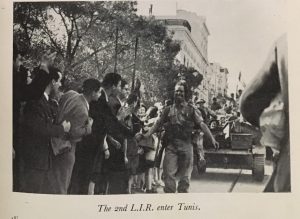
Pat Scott handed over command of the Battalion in June 1943 to Lt-Col H Rogers, and in early August 1943, 2 LIR, now part of the 78th (Battleaxe) Division, joined the assaults on the hills west of Mt Etna near to Centuripe and in a short sharp campaign proved the worth of their excellent battalion spirit. Following a period of rest on the north coast of Sicily, the 2nd Battalion then landed at Taranto in September, and joined the 8th Army’s advance up the Adriatic coast. During the next two months, 2 LIR saw significant battle action at Termoli, and at the Trigno and Sangro rivers, before advancing north to the River Moro. Following a transfer to the very snowy central Apennine mountain region of Italy, near to Castel Di Sangro, where they spent the New Year, 2 LIR was moved in February 1944 to the Cassino front. For two months, they took part in defensive duties near the Gari river and on top of Monte Castellone, part of the Cassino massif. They then formed a key element of the Allied breakthrough into the Liri Valley during May 1944 at Sinagoga. Advancing north of Rome, 2 LIR, now commanded by Lt-Col Coldwell-Horsfalll, who had succeeded Lt-Col Goff when he was killed at Cassino, again met significant German defensive positions near to Lake Trasimene, before the Irish Brigade led a decisive breakthrough of the Albert Line, allowing steady 8th Army advances towards Florence.
After being taken out of the line in early July 1944, and resting in Alexandria for two months, 2 LIR returned to offensive action in October 1944 as part of the 5th Army, north of Florence at Monte Spaduro, before spending a difficult, static winter and early spring period near to the River Senio. April 1945 saw the battalion fight for the first time in the same battle front as 1 LIR and they joined the mobile ‘Kangaroo Army’ in the breakthrough of the Argenta Gap that directly led to final German defeat in Italy. For the last 10 months of the campaign, 2 LIR was commanded by Lt-Col HEN ‘Bala’ Bredin, DSO (with bar) MC (with bar), a RUR officer, who had previously served as second in command of 1 RIrF and when commanding 6 Innisks had been badly wounded near to Cassino in May 1944.
The 1st and 2nd Battalions then continued with peacekeeping duties in Northern Italy and Austria during 1946. During the 2nd World War, the two battalions of the London Irish Rifles:
- had over 700 men killed in action.
- gained 40 battle honours and
- were awarded 6 DSOs, 44 MCs (2 with bars), 14 DCMs, 55 MMs, 2 George Medals, 2 American Silver Stars, and 2 American Bronze Stars. 111 other men were Mentioned in Despatches.
1947 to 1967 – Post Second World War
On 1st January 1947, the Territorial Army was reconstituted, and the 1st Battalion, London Irish Rifles was re-formed at the Duke of York’s Headquarters as part of the 44th (Home Counties) Division. In November 1949, Field Marshal, The Viscount Alexander of Tunis, under whose command both Battalions has served in North Africa and Italy, was appointed Honorary Colonel of the Regiment.
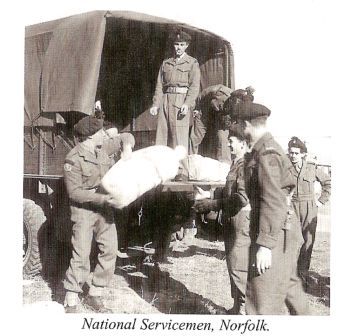
The first post war Commanding Officer was Lt-Col The Viscount Stopford, and his initial objective was to raise a volunteer cadre of experienced officers and senior NCOs to support the absorption and training of any future national serviceman intake. Despite these great efforts, the strength of the Battalion, excluding officers, was rarely above 100 during this early post war period although the Pipe and Drums Corps quickly gained effective strength, under Pipe Major Franklin. The Pipes and Drums gave public performances for Beating The Retreat on Horseguards Parade when they massed along with those of the Irish Guards and Royal Ulster Rifles.
On 25th September 1949, the Regimental War Memorial, which included the names of the 1763 men killed during the two world wars was unveiled by General Sir James Steele, Colonel of the Royal Ulster Rifles. Following the reorganisation of the Infantry Army, the London Irish Rifles, together with the Royal Ulster Rifles, became part of the North Irish Brigade, and in 1950 started to absorb large intakes of National Servicemen. Lt-Colonels Cantopher, OBE GM TD and Basil Irwin MC TD took over the task of absorbing and training the Londoners of Irish connection, as the Battalion grew to more than a thousand. Among the Training Majors, whose role was to train the Battalion to be at instant readiness for active service, was Corran Purdon, later to become President of the Regimental Association.
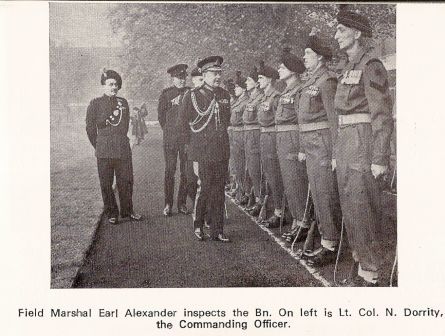
Detachments of the Battalion paraded at the funeral of King George VI and the Coronation of Queen Elizabeth II, as well as joining the parade to accord the Freedom of the City of Belfast to the Royal Ulster Rifles.
Following further reorganisation of the Territorial Army in 1956, the London Irish reverted to the 56th (London) Division, and again wore the the insignia of the Dick Whittington Cat, which the 1st Battalion had worn with pride from 1942 to 1945. By the time that Lt-Col Noel Dorrity TD took over command, the Battalion had again returned to be a volunteer basis for training and organised as a cadre prepared for rapid expansion on mobilisation.
In 1958, the London Irish also took on additional responsibility in Civil Defence. The Regiment now also had two flourishing ancillaries, the Cadet Company and the Regimental Association, both of which continue to this day.
1968 to 1993 – Part of the Royal Irish Rangers
In 1968, the three Regular Irish Infantry Regiments (Royal Ulster Rifles, Royal Irish Fusiliers, Royal Inniskilling Fusiliers) combined to form The Royal Irish Rangers, and the LIR became D Company (London Irish Rifles), 4th Battalion, the Royal Irish Rangers, and remained in this guise for the next 25 years. The year before, on 31st March 1967, Lt-Col HB Holt TD, the last Commanding Officer of the 1st Battalion, London Irish Rifles handed over to Major MJ Van Brugen TD, D Company’s first OC.
Some obvious difficulties emerged in that the remainder of the battalion was located in Northern Ireland and only came together for annual camp. Apart from the Commanding Officer, who made periodic visits to London, little was known about the personnel of Bttn HQ. The role and training of D Company was changed and they were no longer Riflemen. Despite these changes, the Company proved very resilient and managed to maintain its character, inheritance and traditions, and the standards required by the rangers was higher than ever before.
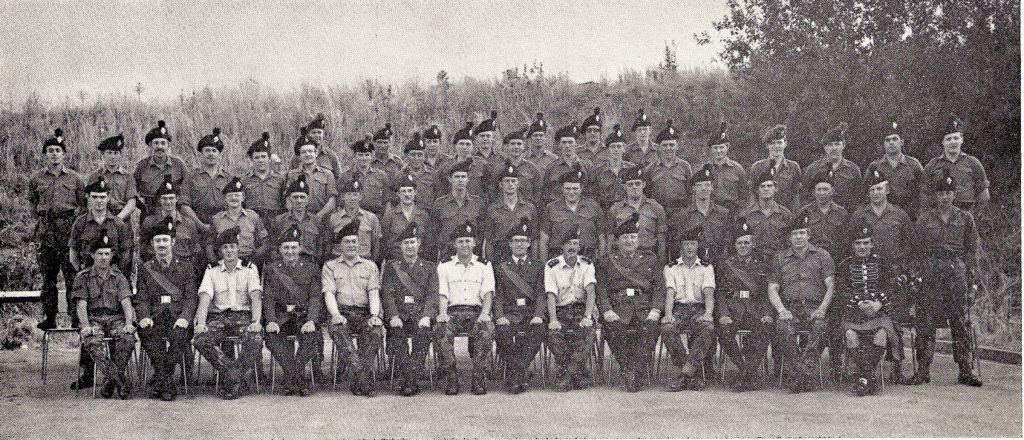
1993 to 2022 – D Company
The London Regiment had been re-formed on 20th April 1993 with the merger of 8th Bn Queen’s Fusiliers, the London Irish and the London Scottish following the “Options for Change” review of the Army. On that date, D Company joined with a company of the London Scottish, The Royal Regiment of Fusiliers and The Princess of Wales Royal Regiment. Between 1st April 1999 and 12th May 2006, the London Regiment gained two Companies of Royal Green Jackets (RGJ) on the disbandment of 4th Bn RGJ, and these Companies formed F and G Companies.
Further upheaval occurred in 2000, when the LIR moved from their historic home, the Duke of York’s HQ in Chelsea, South West London to Connaught House, Flodden Road, Camberwell, South East London, where they remain to this day.
In May 2006, The London Regiment moved from the Queen’s Division to become part of the Household Division and became the TA (now Army Reserve) support battalion for the five regiments of Foot Guards, the first time the Guards have ever had an associated Reserve element, and they played a crucial role in supporting the Regular Army when they were deployed on operations.
In 2018, both the Royal Regiment of Fusiliers and The Princess of Wales Royal Regiment left The London Regiment and were replaced by F Company (Rifles) and G Company (Guards).
The London Regiment was the only Reserve regiment in the Guards Division. and provided highly trained infantry soldiers to reinforce the five regiments of Foot Guards on operations all over the world. The Regiment offered a range of light role capabilities with specialisms in both individual and support weapons.
The London Regiment became the 1st Battalion, London Guards in May 2022 and D Company was renamed as No 15 (Loos) Company, Irish Guards.